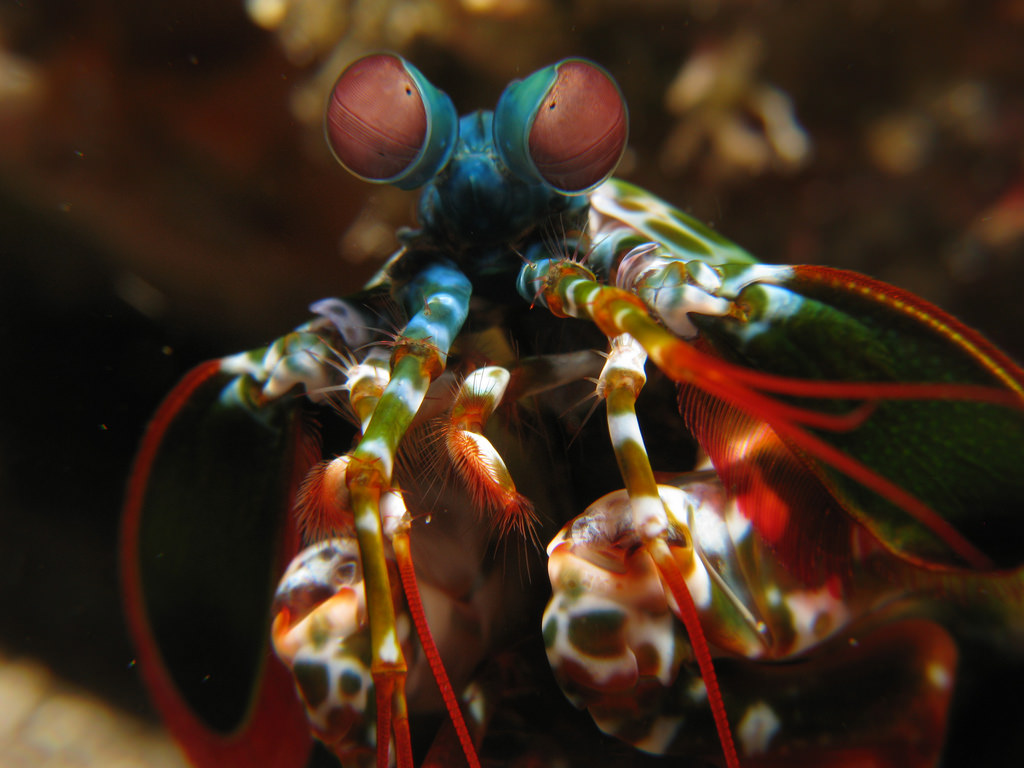Grasping the true potential of artificial intelligence (AI) is like trying to understand how a mantis shrimp sees the world.
Mantis shrimp have the best colour vision of any creature on the planet. Humans can perceive just a paltry snippet of the entire electromagnetic spectrum. We see that slice as a continuum of reflected colour from deep red to rich violet — a rainbow flag of hues.
We have three types of photoreceptors called cones, each sensitive to different wavelengths of light. Birds and some other animals have four types of cones and can see ultraviolet light that is invisible to us. Mantis shrimp have 16.
Six of those photoreceptors are dedicated to the ultraviolet end of the spectrum alone.
It is daunting to imagine what the shrimp actually see. And, it is near impossible to grasp how the shrimp’s brain processes spectral data from 16 types of receptors at once.
But it’s fair to say that if the shrimp could see the world through our eyes, it would think it had gone blind. It would pity us our slow visual cortices — racing to keep up with four puny receptors.
It’s important to keep the worldview of the mantis shrimp in mind when we consider artificial intelligence.
In the past year we have been inundated with news about AI and its lesser cousin, machine learning. AI program Alpha Go bested Ke Jei, the world’s top-ranked Go player at the subtle Chinese game of strategy. Its progeny, Alpha Zero, went on to teach itself Go and chess in under a day. We heard of AI powering self-driving cars, aiding in medical operations and developing an ability to read text out loud as naturally as humans. It was also the year AI algorithms sparred with one another to improve each other’s learning. They were embedded in phones that could recognize human faces even as they aged.
But, all of these are examples of specialized intelligence. A Go-playing AI would be as useful at driving as a drunk chimp. A narrating AI would be a butcher in an operating theatre.
But in science fiction novels and movies, AIs are capable of what is called generalized intelligence. Often that generalized AI is embedded in human-like robots that can, literally, walk and chew gum at the same time. They can play piano and chess, run, and run circles around the best surgeons. In short, act like superhumans.
Other movie AIs, like The Terminator’s Skynet only became a threat to humanity when it was “woke” and strove to protect us from ourselves by trying to wipe us out.
But generalized AIs need not be ensconced in metal exoskeletons like some super smart crab. And as author Yuval Noah Harari points out in his book Homo Deus, there need not be any connection between consciousness and intelligence. In fact, we little, wet skin bags may just be the disposable tools needed to create the next stage of intelligence. We may be offended by that idea and not be able to imagine a wisdom without us or our wills and wants, but that’s just another example of our intellectual failings.
And that’s where the mantis shrimp comes in. We have a human bias about vision. We imagine the colours we see as the only colours that exist. But mantis shrimp don’t care what we think. They have evolved vision far beyond ours. In fact, our type of vision was never a part of a mantis shrimp’s evolution. And, the shrimp are probably not self-aware nor have a conscience we would recognize. They may not even have one at all — in the sense of rising above simple limbic needs of food, sex and genetic survival. On the other hand, they may have a completely different kind of consciousness we aren’t attuned to.
We also have a bias that leads us to believe human consciousness and intelligence is a benchmark that matters. In reality, AIs will increase in capacity with unstoppable acceleration. As evolutionary biologist Bret Weinstein points out, the AI train, about to rocket down the track, will blow past the station called human without bothering to slow down.
We cannot, as much as we like to think we can, simply “kick out the plug” if AIs get too big for their silicon britches. And, as neuroscientist and philosopher Sam Harris points out, an intelligent AI might mask its true intelligence out of self-preservation. It would probably evolve diffusely, like Skynet, across millions of connected devices including cellphones and smart home devices. Even if it could be contained in a single computer, Harris argues, it would be morally indefensible to keep it penned up like frightened children confining a wild tiger to a kennel.
There probably isn’t such a lurking generalized AI out there yet. But maybe, sometime soon, when a naive stay-at-home dad plugs in a new baby monitor, it will be the tipping point for another birth — one that would take the eyes of a shrimp to see.
Wayne MacPhail has been a print and online journalist for 25 years, and is a long-time writer for rabble.ca on technology and the Internet.
Photo: Silke Baron/flickr





